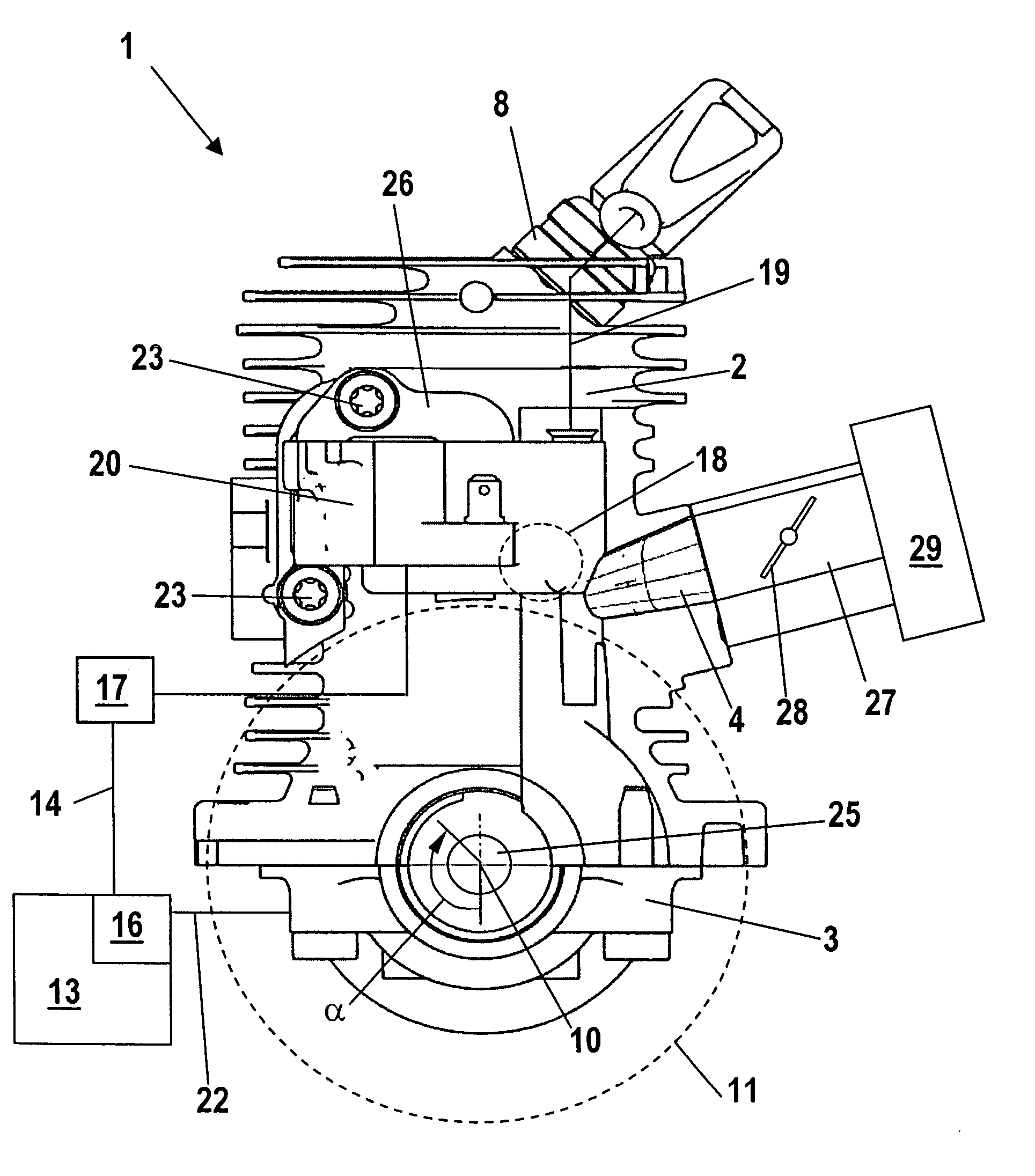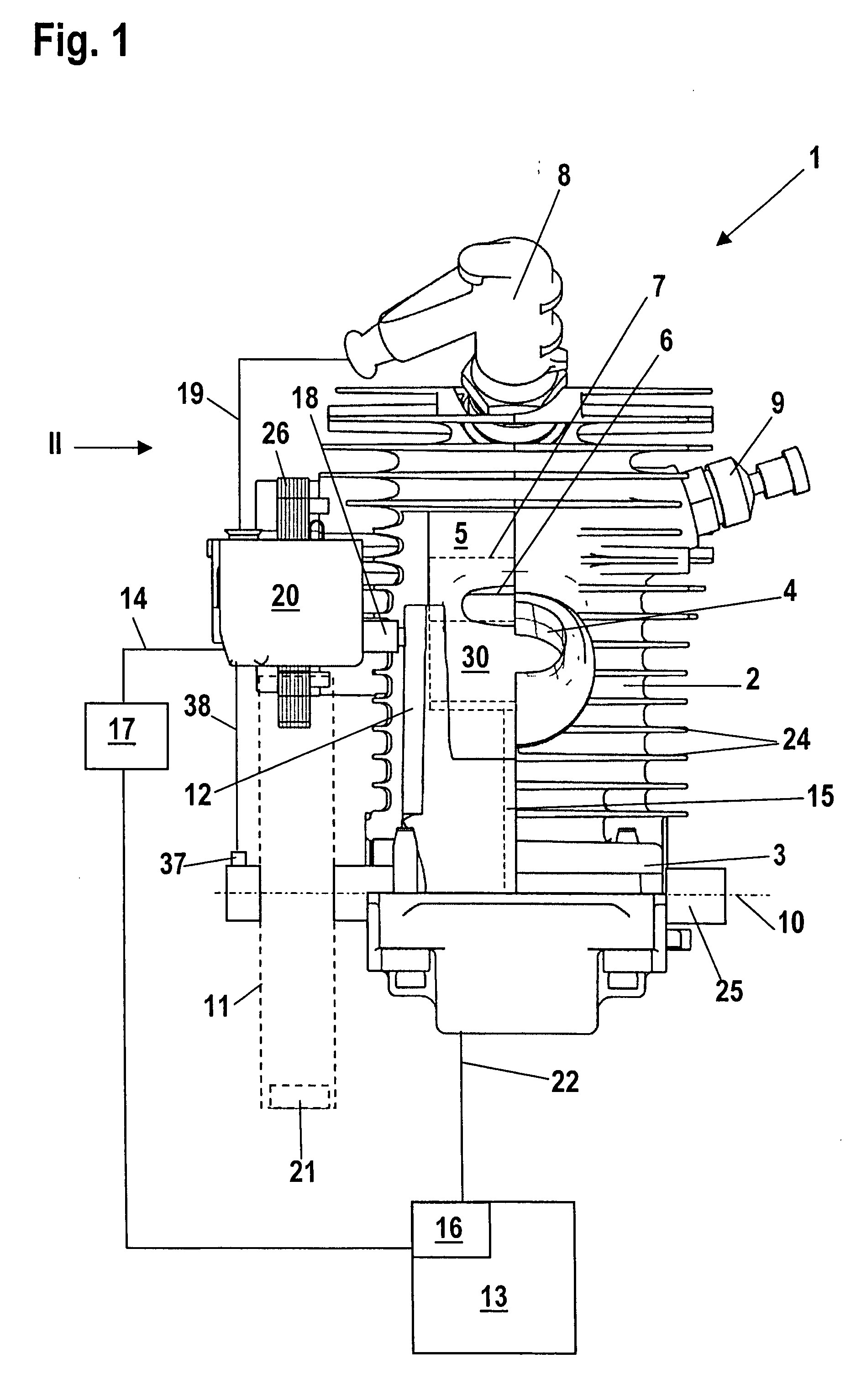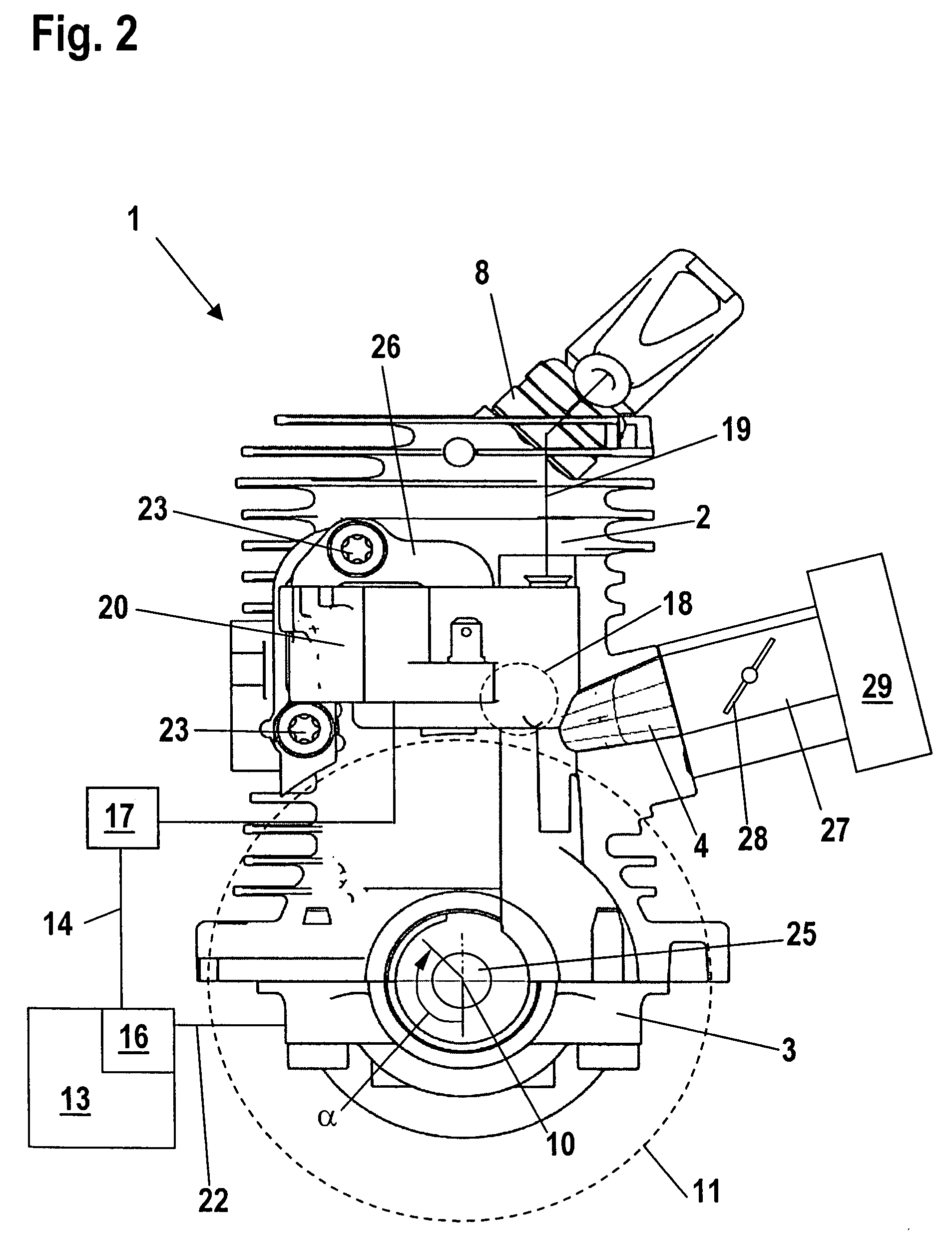Method of operating a single cylinder two-stroke engine
a two-stroke engine and single-cylinder technology, applied in the direction of machines/engines, electric control, ignition automatic control, etc., can solve the problems of affecting the operation of the two-stroke engine, affecting the operation of the machine, so as to reduce the exhaust gas value, suppress the ignition, and reduce the effect of fuel consumption
- Summary
- Abstract
- Description
- Claims
- Application Information
AI Technical Summary
Benefits of technology
Problems solved by technology
Method used
Image
Examples
Embodiment Construction
[0022] The two-stroke engine 1 shown in FIG. 1 has a cylinder 2 having cooling ribs 24 arranged on the outer surface thereof. A piston 7 is reciprocally journalled in the cylinder 2 and is shown in phantom outline. The piston 7 drives a crankshaft 25 via a connecting rod 15. The crankshaft 25 is rotatably journalled in a crankcase 3 about the crankshaft axis 10. An inlet 4 opens on the cylinder 2 via which substantially fuel-free combustion air is supplied to the two-stroke engine which is configured as a single cylinder engine.
[0023] The two-stroke engine includes at least one transfer channel 12 which connects the crankcase 3 to a combustion chamber 5 in the region of bottom dead center of the piston 7. The combustion chamber 5 is delimited by the cylinder 2 and the piston 7. Two or four transfer channels 12 are provided and are arranged symmetrically with respect to a partitioning center plane centered with respect to the inlet 4. The piston 7 has a piston pocket 30 indicated in...
PUM
 Login to View More
Login to View More Abstract
Description
Claims
Application Information
 Login to View More
Login to View More - R&D
- Intellectual Property
- Life Sciences
- Materials
- Tech Scout
- Unparalleled Data Quality
- Higher Quality Content
- 60% Fewer Hallucinations
Browse by: Latest US Patents, China's latest patents, Technical Efficacy Thesaurus, Application Domain, Technology Topic, Popular Technical Reports.
© 2025 PatSnap. All rights reserved.Legal|Privacy policy|Modern Slavery Act Transparency Statement|Sitemap|About US| Contact US: help@patsnap.com



